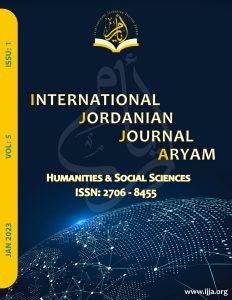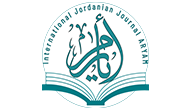Received: 19-3-2022 Revised: 09-05-2022 Accepted: 09-06-2022
Abstract: The Arab-Islamic civilization is considered one of the most brilliant civilizations in terms of its abundance of production, the strength of its influence, and the vast lands it covered. Beginning in the sixth century AD, the Muslim Arabs were able to establish the greatest civilizations in the Arabian Peninsula in a short time. This civilization crossed borders east and west and conquered diverse peoples and lands. The Muslim Arabs were able to enrich their civilization with the various products of the peoples that reached it. The manifestations of civilization were of the utmost beauty and dazzled those who saw it and were immortalized in history in all its fields. The Europeans were greatly influenced by the Arab-Islamic civilization, so the kings and scholars carried out a wide transfer movement, and their lives were imprinted with the Arab-Islamic customs and traditions. This process summarizes the interaction that took place in the Mediterranean basin in terms of a movement for translation and knowledge transfer, firstly between 750 AD and 950 AD, where ancient sciences were transferred from Latin to the Arabic language mainly in Baghdad, and secondly, what happened from that process between 1100 AD and 1300 AD in Spain and Sicily mainly, and in other European cities, the transfer of Greek-Arabic sciences to Latin after the Fourth Crusade attack in 1204 AD, and what happened after that in contrast to what was transmitted from the Arabs with what remained of the Greek origins of knowledge.
Keywords: Islamic civilization, transfer, Andalusia, human civilization, Western Europe
DOI: https://zenodo.org/records/10682873https://zenodo.org/records/10682873
IJJA is a Humanities and Social Sciences publishing journal committed towards providing a platform to outstanding scientists and researchers to exhibit their findings for the furtherance of Humanities and Social Sciences.
The International Jordanian Journal, Aryam Journal of Humanities and Social Sciences (IJJA) (ISSN print: 2710-3005), (ISSN Online: 2706 – 8455) welcomes high quality contributions investigating topics in the fields of Humanities and Social Sciences .
![42cd5crossreff[1]](https://aijj.org/wp-content/uploads/2023/04/42cd5crossreff1.jpg)
![6357copenaccsess[1]](https://aijj.org/wp-content/uploads/2023/04/6357copenaccsess1.png)
![97aa6road[1]](https://aijj.org/wp-content/uploads/2023/04/97aa6road1.jpg)

